Riparian Habitat Restoration: Maintaining a Jewel in the Desert
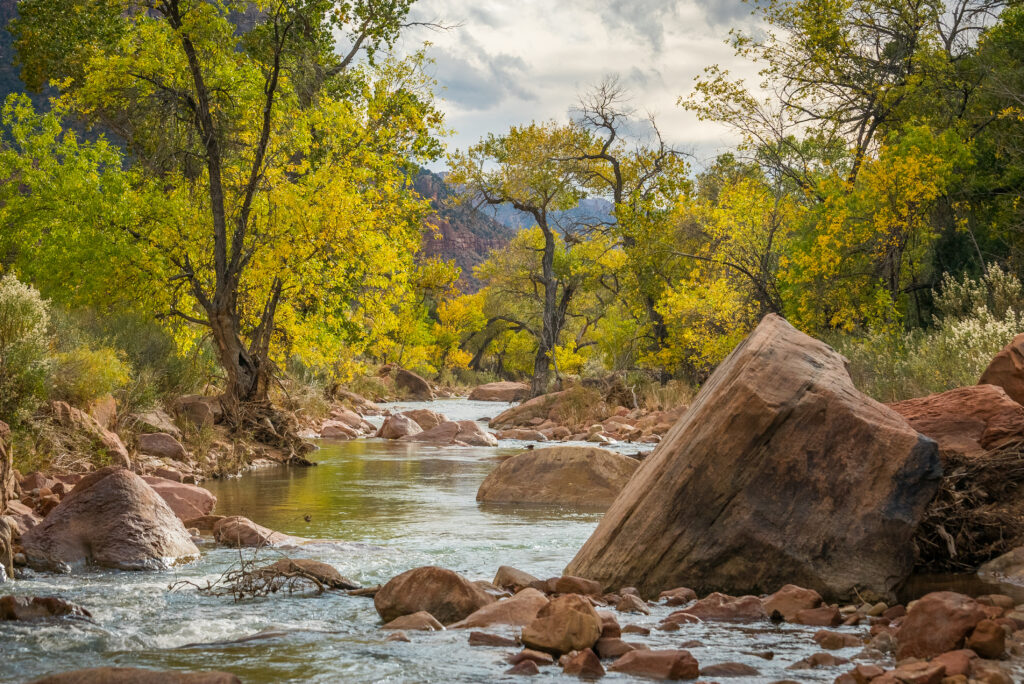
Riparian habitats have been in decline throughout the southwestern U.S. since about 1900, as water management practices (i.e., river damming, channelization, and water diversion) have reduced the frequency and intensity of flooding events and the potential for establishment and regeneration of most native woody riparian species. As native willows (Salix spp.) and cottonwoods (Populus spp.) have declined, non-native tamarisk (Tamarix spp.) and Russian olive (Elaeagnus angustifolia) have invaded, resulting in a widespread shift from riparian habitats dominated by native tree species to those dominated by exotic species.
Riparian Ecosystems: The Rarest Kind
In Utah, lowland riparian habitat is the rarest habitat type and is under the greatest threat. Despite this, it ranks second in vertebrate biodiversity, supporting diverse and unique assemblages of plant and animal species, particularly in desert landscapes. The aquatic and riparian habitats in and near the Virgin River in St. George support many native wildlife species and serve as critical habitat for two federally endangered fish species, the Woundfin (Plagopterus argentissimus) and Virgin River Chub (Gila seminuda), and an endangered bird species, the Southwestern Willow Flycatcher (Empidonax traillii extimus). Additionally, hundreds of neotropical migrant bird species occupy the riparian corridor annually. Efforts to restore, enhance, and re-create native riparian habitat are necessary to recover both the habitat itself and those priority species dependent upon it.
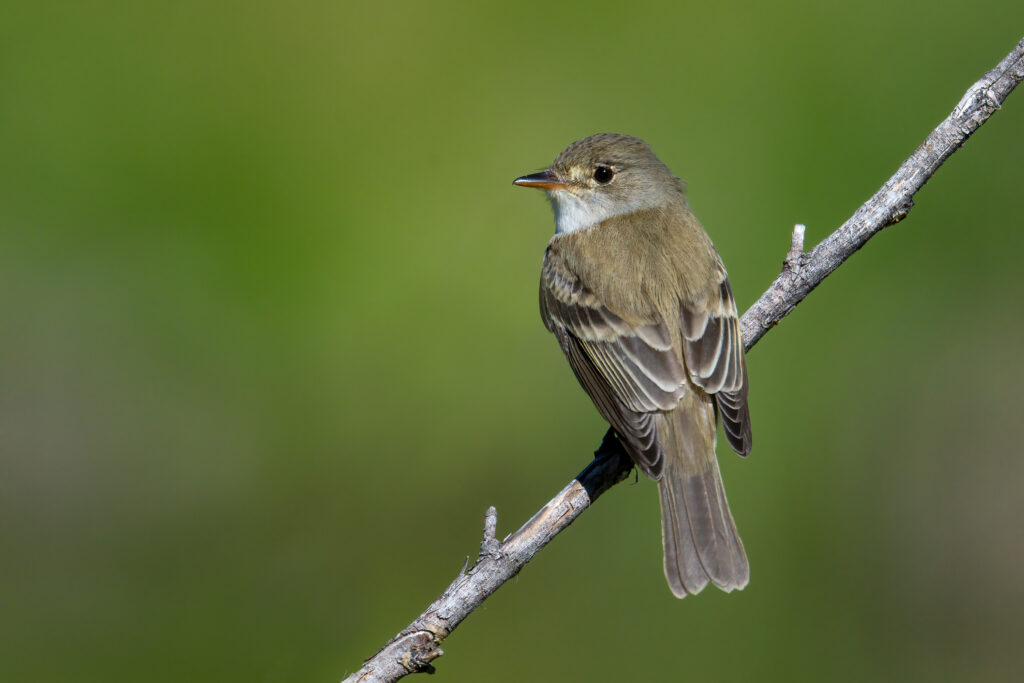
Tamarisk Invasion
Tamarisk (Tamarix spp.) are a relatively small tree or shrub (although some trees can grow to 30 feet) native to Eurasia that were introduced into western North America in the mid 1800s mainly to provide windbreaks and to prevent soil erosion. They have also been planted as ornamental plants and shade trees. Tamarisk, also known as salt cedar, are a long-lived plant with an extensive root system and small scaly leaves that secrete salt. Tamarisk can increase soil salinity levels, which may prevent the establishment of less salt-tolerant native trees (e.g., willows and cottonwoods). Tamarisk has invaded the southwest U.S. as native willows and cottonwoods have declined, resulting in a widespread shift from riparian habitats dominated by native tree species to those dominated by non-native species.
Non-Native Vegetation Removal
Since 2006, more than 100 riparian restoration projects have been conducted within the Virgin River basin under the direction of the Virgin River Program and its partners. Projects have included mechanical removal efforts such as cutting down mature tamarisk trees with chainsaws, clipping small saplings with hand trimmers, and pulling out seedlings by hand. Additional projects have been conducted using chemical herbicides to spray cut stumps of mature trees or the foliage of smaller shrubs. Through these combined efforts, tamarisk and other non-native species (e.g., Russian olive) have been removed from more than 180 acres along the Virgin River in Utah.
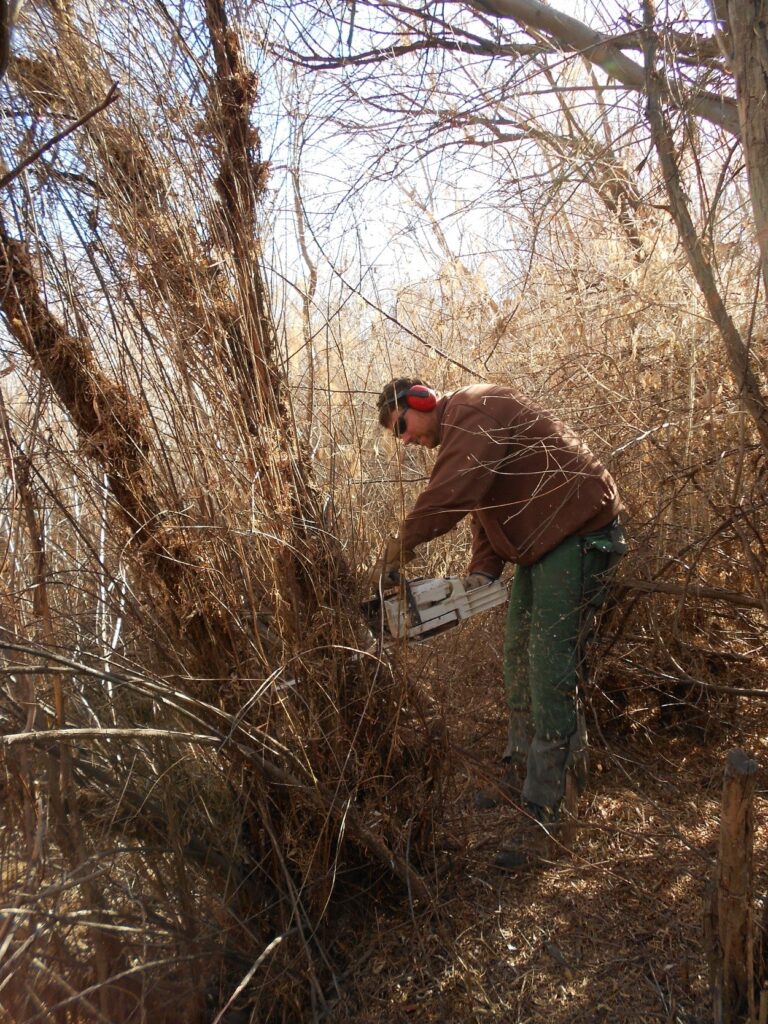
Native Recovery: The Return of Willows
Since 2006, native revegetation projects have occurred at 50 sites , resulting in the recovery of more than 70 acres along the Virgin River and its tributaries (e.g., La Verkin Creek, Quail Creek, Santa Clara River). The majority of habitat restoration activities include the planting of Coyote willow stems. Willow stems are collected from nearby sources and transported to the restoration sites. Harvested willows are about 2-4 inches in diameter and 6-8 feet tall. Planting sites are selected based on close proximity to water, either surface water or the water table. Three stems are planted in holes, which are generally three to four feet deep, with some stems planted up to five feet deep. Since 2006, more than 50,000 Coyote willow stems have been planted in habitat restoration projects under the direction of the Virgin River Program and its partners.
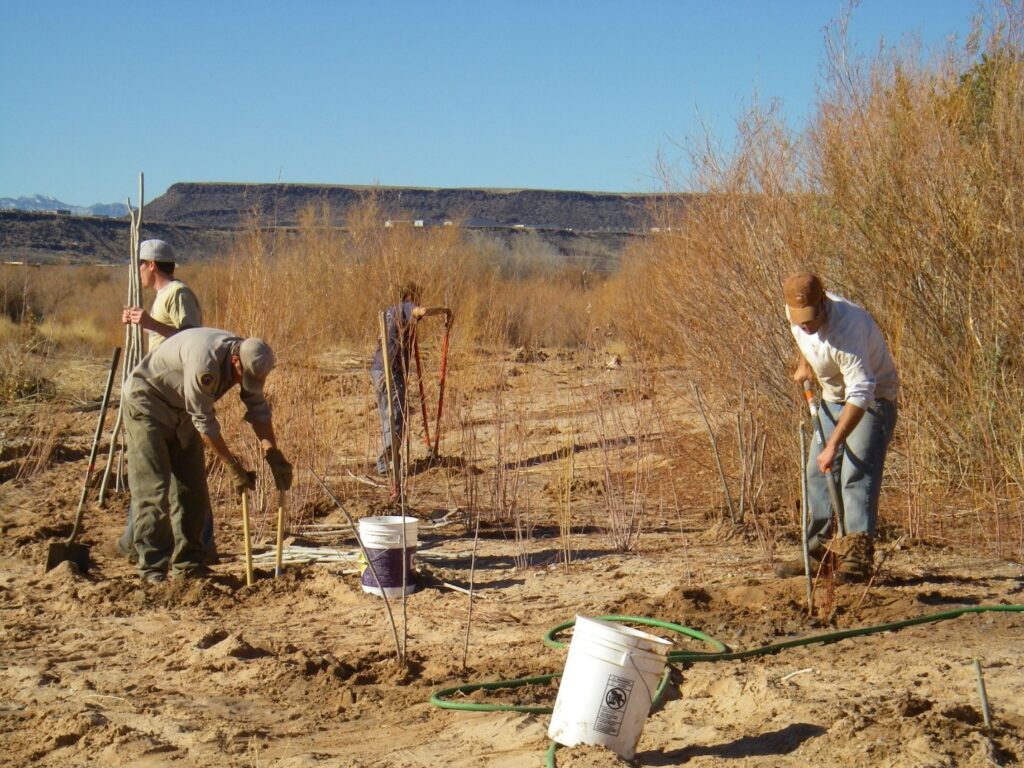
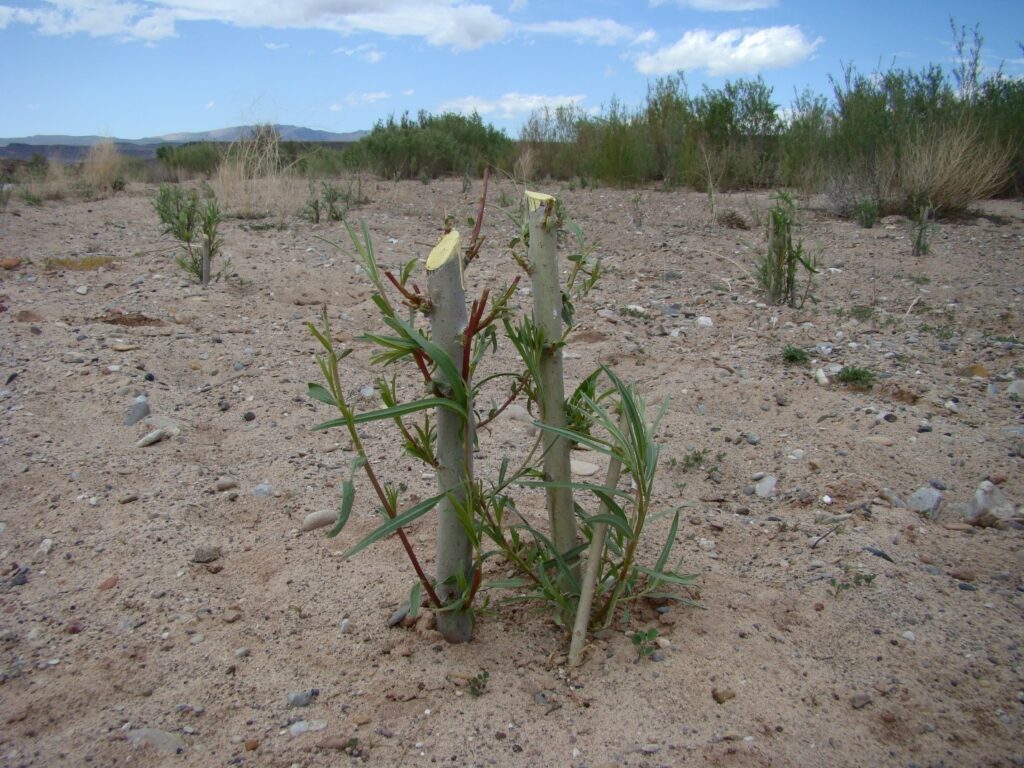
Management Success: Working Together
The primary goal of the Virgin River Program is to “implement actions to recover, conserve, enhance, and protect native species,†in part through the “enhancement of riparian and 100-year floodplain habitat.†The restoration projects described above address Virgin River Program needs by implementing on-the-ground restoration efforts, as well as by collaborating with partners in planning restoration and other vegetation management activities. The creation of cooperative partnerships and diverse relationships has been instrumental in the riparian habitat restoration accomplishments in the Virgin River Basin.